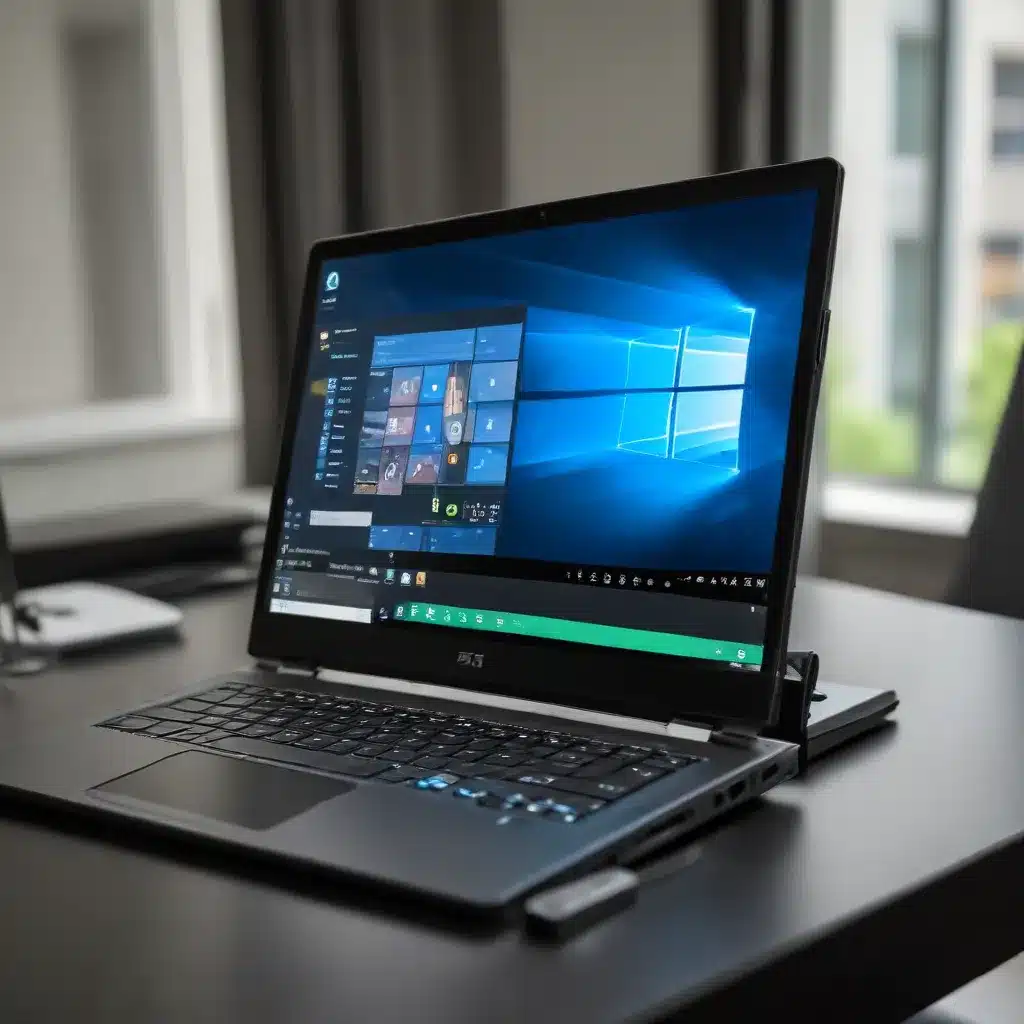
Optimizing Delivery Optimization for Seamless Windows 11 Updates
As a seasoned IT professional, I’ve encountered numerous challenges when it comes to managing Windows updates, particularly with the introduction of Windows 11 and its Delivery Optimization feature. In this comprehensive article, we’ll delve into the intricacies of Delivery Optimization, explore performance monitoring techniques, and uncover practical tips to optimize your Windows 11 update experience.
Understanding Delivery Optimization
Delivery Optimization is a powerful Microsoft technology designed to improve the efficiency of content delivery, including Windows updates, across your network. It utilizes a hybrid approach, leveraging both HTTP-based downloads and peer-to-peer (P2P) file-sharing to distribute updates and other content.
One of the key advantages of Delivery Optimization is its ability to offload bandwidth usage from centralized servers by tapping into the unused resources of participating devices. This peer-to-peer model can significantly reduce the strain on your network infrastructure, leading to faster update downloads and enhanced user experience.
Monitoring Delivery Optimization Performance
Effectively monitoring Delivery Optimization performance is crucial to ensuring your Windows 11 updates are delivered seamlessly. Here are some key metrics and tools to consider:
-
Delivery Optimization PowerShell Cmdlets: The Delivery Optimization PowerShell cmdlets provide a wealth of information about the performance and status of your Delivery Optimization downloads. Using commands like
Get-DeliveryOptimizationStatusandGet-DeliveryOptimizationLog, you can gain insights into the number of bytes downloaded from peers, the overall download speed, and any potential issues. -
Windows Update for Business Reporting: If your organization utilizes Windows Update for Business, you can leverage the reporting capabilities to track the performance of Delivery Optimization. These reports offer detailed analytics on update deployment, including the effectiveness of peer-to-peer distribution.
-
Network Monitoring Tools: Integrating network monitoring tools, such as Microsoft Network Monitor or third-party solutions, can provide valuable insights into the network traffic patterns and bandwidth utilization associated with Delivery Optimization. This can help you identify any bottlenecks or areas for improvement.
-
User Feedback: Don’t underestimate the importance of gathering feedback from your end-users. Monitor support tickets, user complaints, and any reported issues related to slow or problematic Windows 11 updates. This user-centric data can help you identify the specific pain points and tailor your Delivery Optimization configurations accordingly.
Optimizing Delivery Optimization for Windows 11
Now that we’ve covered the foundational aspects of Delivery Optimization, let’s dive into some practical tips for optimizing its performance in your Windows 11 environment:
-
Configure Peer Groups: One of the most critical aspects of Delivery Optimization is the way you define your peer groups. By leveraging the
DODownloadMode,DOGroupID, andDOGroupIDSourcesettings, you can control how devices are grouped for peer-to-peer file sharing. Consider factors like network topology, VPN usage, and existing logical groupings (e.g., Active Directory sites) to ensure optimal peer discovery and content distribution. -
Manage Peer Selection: In addition to defining peer groups, you can further refine the peer selection process using the
DORestrictPeerSelectionsetting. This allows you to limit the peer pool to specific subnets or other criteria, ensuring that the content is primarily sourced from the most relevant and reliable devices. -
Optimize Cache Management: Delivery Optimization utilizes a local cache to store downloaded content, which can be leveraged by other devices. Adjust settings like
DOMinFileSizeToCache,DOMaxCacheSize, andDOMaxCacheAgeto strike the right balance between cache utilization and available disk space on your devices. -
Enhance Peer Connectivity: To improve the efficiency of peer-to-peer connections, consider adjusting settings like
DOMinBackgroundQoSand the set of delay-related policies (DODownloadBackgroundQCostThreshold,DODownloadForegroundQCostThreshold,DODownloadBackgroundQCostLimit, andDODownloadForegroundQCostLimit). These settings can help optimize the balance between peer-to-peer and HTTP-based downloads. -
Manage Resource Constraints: Delivery Optimization can be tailored to account for various system resources, such as available disk space, RAM, and battery levels. Use settings like
DOMinDiskSizeAllowedToPeer,DOMinRAMAllowedToPeer, andDOMinBatteryPercentageAllowedToUploadto ensure a balance between performance and resource utilization. -
Leverage Microsoft Connected Cache: For enterprises with a large number of devices, consider deploying Microsoft Connected Cache (MCC) as a dedicated caching solution. MCC can significantly enhance the performance and reliability of Delivery Optimization, reducing the strain on your network infrastructure and providing a more consistent update experience for your users.
-
Monitor and Troubleshoot: Regularly monitor the performance of Delivery Optimization using the tools and metrics discussed earlier. Investigate any issues or suboptimal behavior, and refer to Microsoft’s comprehensive troubleshooting guide to address common problems.
By implementing these optimization strategies, you can unlock the full potential of Delivery Optimization in your Windows 11 environment, ensuring seamless and efficient Windows updates for your users.
Conclusion
Delivery Optimization is a powerful Microsoft technology that can significantly improve the performance and reliability of Windows 11 updates. By understanding its inner workings, monitoring its performance, and applying targeted optimization techniques, you can create a seamless update experience for your users while also reducing the strain on your network infrastructure.
Remember, the key to successful Delivery Optimization is a combination of continuous monitoring, data-driven decision-making, and a proactive approach to troubleshooting and optimization. By following the guidance provided in this article, you’ll be well on your way to mastering Delivery Optimization and delivering exceptional Windows 11 update experiences for your organization.
For more IT tips, insights, and solutions, be sure to visit IT Fix, where our team of seasoned professionals is dedicated to helping businesses and individuals alike navigate the ever-evolving world of technology.












